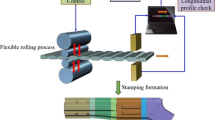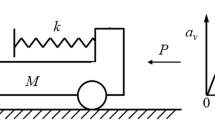Abstract
Accurate on-board occupant injury risk prediction of motor vehicle crashes (MVCs) can decrease fatality rates by providing critical information timely and improving injury severity triage rates. The present implemented prediction algorithms in vehicle safety systems are probabilistic and rely on multi-variate logistic regression of real-world vehicle collision databases. As a result, they do not utilize important vehicle and occupant features and tend to overgeneralize the solution space. This study presents a framework to address these problems with deterministic and computationally efficient lumped parameter model simulations driven by a database of vehicle crash tests. A 648-case mixed database was generated with finite element and multi-body models and validated under the principal directions of impact with experimental results for a single vehicle body type. Using the finite element database, we developed lumped parameter models for four principal modes of impact (i.e., frontal, rear, near side and far side) with parameters identified via genetic algorithm optimization. To obtain confidence bounds for the injury risk prediction, the parameter uncertainty and model adequacy were evaluated with arbitrary and bootstrapped polynomial chaos expansion. The developed algorithm was able to achieve over triage rates of 17.1% ± 8.5%, whilst keeping the under triage rates below 8% on a finite element-multi body model database of a single vehicle body type. This study demonstrated the feasibility and importance of using low-complexity deterministic models with uncertainty quantification in enhanced occupant injury risk prediction. Further research is required to evaluate the effectiveness of this framework under a wide range of vehicle types. With the flexibility of parameter adjustment and high computational efficiency, the present framework is generic in nature so as to maximize future applicability in improved on-board triage decision making in active safety systems.
Similar content being viewed by others
References
World Health Organization. Global Status Report on Road Safety 2018. Geneva: World Health Organization, 2018. 122
Lee E, Wu J, Kang T, et al. Estimate of mortality reduction with implementation of advanced automatic collision notification. Traffic Injury Prevention, 2017, 18: S24–S30
Seekins T, Blatt A, Flanigan M. Automatic crash notification project: Assessing montanas motor vehicle crash and related injury data infrastructure. Final Report. FHWA, U.S. Department of Transportation, 2013
Lubbe N, Kiuchi T. Injury estimation for advanced automatic collision notification (AACN) in Germany. Expert Symposium on Accident Research, 2014
Yoshida S, Hasegawa T, Tominaga S, et al. Development of injury prediction models for advanced automatic collision notification based on Japanese accident data. Int J Crashworthiness, 2016, 21: 112–119
Nishimoto T, Mukaigawa K, Tominaga S, et al. Serious injury prediction algorithm based on large-scale data and under-triage control. Accident Anal Prevention, 2017, 98: 266–276
Stitzel J D, Weaver A A, Talton J W, et al. An injury severity-, time sensitivity-, and predictability-based advanced automatic crash notification algorithm improves motor vehicle crash occupant triage. J Am College Surgeons, 2016, 222: 1211–1219.e6
Katagiri M, Miyazaki Y, Pramudita J, et al. Development of occupant injury prediction algorithms for advanced automatic collision notification by numerical crash reconstructions. In: Proceedings of the International Technical Conference on the Enhanced Safety of Vehicles. 2013. 1–8
Bose D, Crandall J R, McGwin G, et al. Computational methodology to predict injury risk for motor vehicle crash victims: A framework for improving advanced automatic crash notification systems. Trans Res Part C-Emerg Technol, 2011, 19: 1048–1059
Augenstein J, Digges K, Ogata S, et al. Development and validation of the urgency algorithm to predict compelling injuries. In: Proceedings of the 17th International Technical Conference on the Enhanced Safety of Vehicles (ESV). 2001. 1–6
Kononen D W, Flannagan C A C, Wang S C. Identification and validation of a logistic regression model for predicting serious injuries associated with motor vehicle crashes. Accident Anal Prevention, 2011, 43: 112–122
Weaver A A, Talton J W, Barnard R T, et al. Estimated injury risk for specific injuries and body regions in frontal motor vehicle crashes. Traffic Injury Prevention, 2015, 16: S108–S116
American College of Surgeons Committee on Trauma. Resources for Optimal Care of the Injured Patient. Chicago: American College of Surgeons, 2006
Marelli S, Sudret B. UQLab user manual—Polynomial chaos expansions. Report UQLab-V1.2-104. Zurich: Chair of Risk, Safety and Uncertainty Quantification, ETH Zurich, 2019
Marelli S, Sudret B. An active-learning algorithm that combines sparse polynomial chaos expansions and bootstrap for structural reliability analysis. Struct Saf, 2018, 75: 67–74
Oladyshkin S, Nowak W. Data-driven uncertainty quantification using the arbitrary polynomial chaos expansion. Reliability Eng Syst Saf, 2012, 106: 179–190
Wang F Y, Zheng N N, Cao D, et al. Parallel driving in CPSS: A unified approach for transport automation and vehicle intelligence. IEEE/CAA J Autom Sin, 2017, 4: 577–587
Cui L, Hu J, Park B B, et al. Development of a simulation platform for safety impact analysis considering vehicle dynamics, sensor errors, and communication latencies: Assessing cooperative adaptive cruise control under cyber attack. Transport Research C-Emer, 2018, 97: 1–22
Tsoi A H, Gabler H C. Evaluation of vehicle-based crash severity metrics. Traffic Injury Prevent, 2015, 16: S132–S139
Adam T, Untaroiu C D. Identification of occupant posture using a Bayesian classification methodology to reduce the risk of injury in a collision. Trans Res Part C-Emerg Technol, 2011, 19: 1078–1094
Nie B, Poulard D, Subit D, et al. Experimental investigation of the effect of occupant characteristics on contemporary seat belt payout behavior in frontal impacts. Traffic Injury Prevent, 2016, 17: 374–380
Nie B, Sathyanarayan D, Ye X, et al. Active muscle response contributes to increased injury risk of lower extremity in occupant-knee airbag interaction. Traffic Injury Prevention, 2018, 19: S76–S82
Paulitz T J, Blackketter D M, Rink K K. Constant force restraints for frontal collisions. Proc Institution Mech Engineers Part D-J Automobile Eng, 2006, 220: 1177–1189
Deb A, Srinivas K C. Development of a new lumped-parameter model for vehicle side-impact safety simulation. Proc Institution Mech Engineers Part D-J Automobile Eng, 2008, 222: 1793–1811
van der Laan E, Veldpaus F, de Jager B, et al. Control-oriented modelling of occupants in frontal impacts. Int J Crashworth, 2009, 14: 323–337
Murad M, Das M, Cheok K C. Modeling and simulation of an advanced intelligent restraint system. In: Proceedings of the IEEE International Systems Conference. 2009. 333–337
Shi Y, Wu J, Nusholtz G S. Optimal restraint for the thoracic compression of the SID-IIs crash dummy using a linear spring-mass model. J Dynamic Syst Measurement Control, 2013, 135: 031007
Thanigaivel R T, Swain A K. Investigation of the vehicle restraint system in a frontal impact. Int J Crashworthiness, 2017, 22: 662–675
Bance I, Nie B. A framework for near real-time occupant injury risk prediction using a sequence-to-sequence deep learning approach. In: Proceedings of the Internation Research Council on Biomechanics of Injury (IRCOBI). Florence, 2019
Marzougui D, Samaha R R, Cui C, et al. Extended validation of the finite element model for the 2010 Toyota yaris passenger Sedan. 2012
Crash Test Barrier NHTSA 214 Moving Deformable Barrier. Technical Report v04.02.18. Plascore Inc., 2018
Huang M. Vehicle Crash Mechanics. 1st ed. Boca Raton: CRC Press, 2002
Toyota Yaris Occupant Model Checklist. Technical Report. National Crash Analysis Center, 2013
MGA Research Corportation. NCAP-MGA-2006-011: New car assessment program frontal barrier impact test. Burlington: National Highway Safety Administration, 2007
Insurance Institute for Highway Safety. Side impact crashworthiness evaluation: Crash test report 2007 Toyota yaris (CES0639). Arlington: IIHS, 2006
Insurance Institute for Highway Safety. 2007 Toyota Yaris Crash Test Report. Arlington: IIHS, 2008
Gandhi U N, Jack Hu S. Data based models for automobile side impact analysis and design evaluation. Int J Impact Eng, 1996, 18: 517–537
MGA Research Corporation. NCAPSIDE-MGA-2006-012: New car assessment program side impact test. Burlington: National Highway Traffic Safety Administration, 2006
Gehre C, Gades H, Wernicke P. Objective rating of signals using test and simulation responses. Enhanced Safety Vehicle (ESV), 2009
MGA Research Corporation. 214D-MGA-2001-001: Safety compliance testing for fmvss 214 side impact protection. Burlington: National Highway Safety Administration, 2001
Fung Y C, Skalak R. Biomechanics: Mechanical properties of living tissues. J BioMech Eng, 1981, 103: 231–298
Viano D C, Culver C C, Evans L, et al. Involvement of older drivers in multivehicle side-impact crashes. Accident Anal Prevention, 1990, 22: 177–188
NVidia. Self Driving Safety Report. NVidia, 2019. 16
Schoell S L, Doud A N, Weaver A A, et al. Development of a time sensitivity score for frequently occurring motor vehicle crash injuries. J Am College Surgeons, 2015, 220: 305–312
Author information
Authors and Affiliations
Corresponding author
Additional information
This work was supported in part by the National Natural Science Foundation of China (Grant Nos. 51705276 and 51675295), Tsinghua University Initiative Scientific Research Program (Grant No. 2019Z08QCX13), and the National Key R&D Program of China (Grant Nos. 2017YFE0118400 and 2018YFE0192900).
Supporting Information
The supporting information is available online at tech.scichina.com and link.springer.com. The supporting materials are published as submitted, without typesetting or editing. The responsibility for scientific accuracy and content remains entirely with the authors.
Electronic supplementary material
Rights and permissions
About this article
Cite this article
Bance, I., Yang, S., Zhou, Q. et al. A framework for rapid on-board deterministic estimation of occupant injury risk in motor vehicle crashes with quantitative uncertainty evaluation. Sci. China Technol. Sci. 64, 521–534 (2021). https://doi.org/10.1007/s11431-019-1565-9
Received:
Accepted:
Published:
Issue Date:
DOI: https://doi.org/10.1007/s11431-019-1565-9




